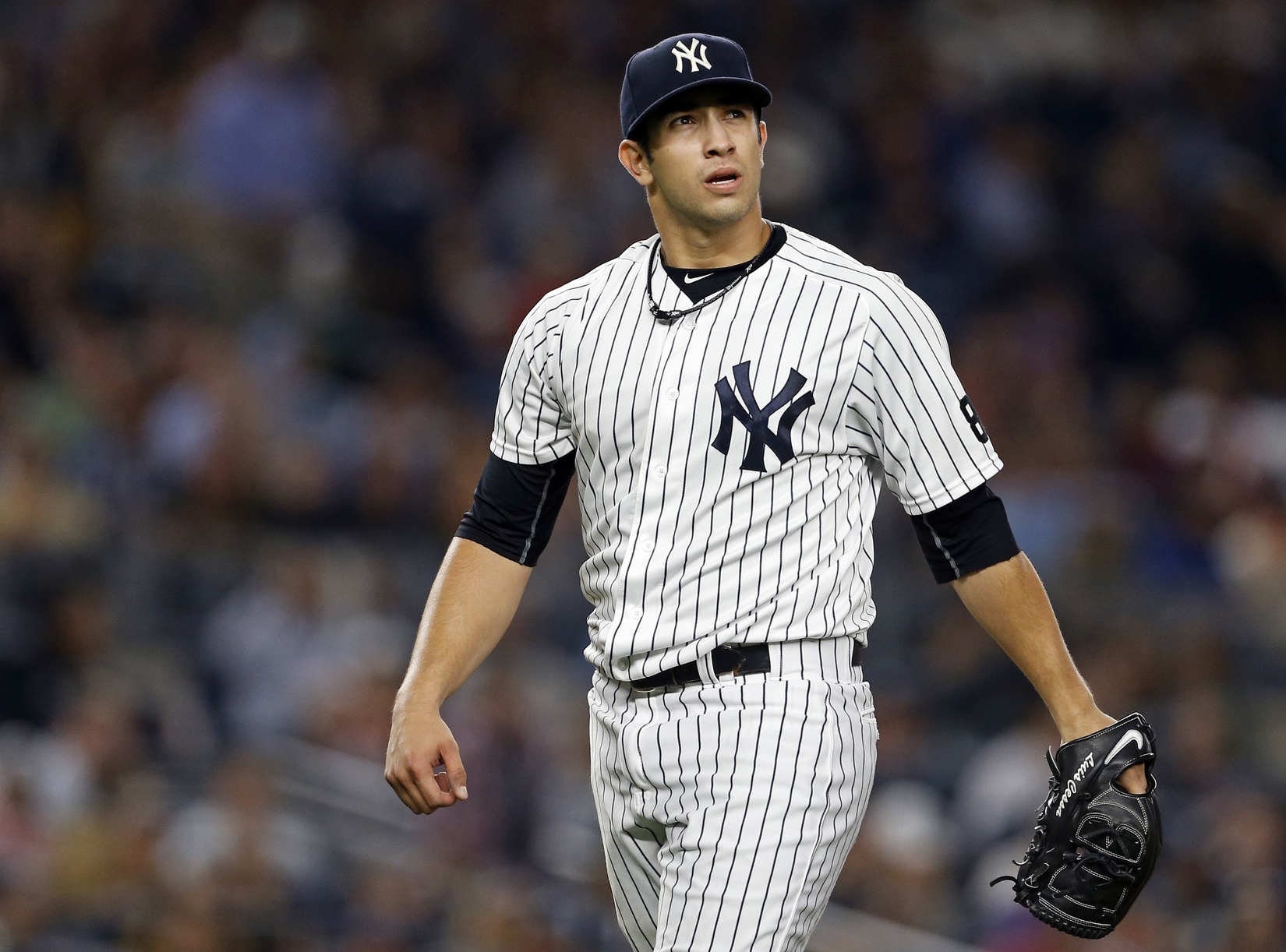Now that the season has come to an end, we can look back at how the Yankees’ pitching staff finished relative to the rest of the pitching staffs around the league. Without further ado:
| Yankees | MLB Rank | AL Rank | |
|---|---|---|---|
| ERA | 4.16 | 15 | 7 |
| ERA- | 98 | 13 | 7 |
| K% | 23.1 | 5 | 2 |
| BB% | 7.4 | 4 | 2 |
| K-BB% | 15.8 | 5 | 1 |
| HR/9 | 1.35 | 28 | 14 |
| HR/FB% | 15.5 | 29 | 15 |
| AVG | 0.246 | 8 | 4 |
| cFIP | 91 | 2 | 2 |
| DRA | 3.77 | 2 | 2 |
| Avg. Fastball Velocity | 93.7 mph | 1 | 1 |
By run prevention results, the Yankees were almost exactly league average in both the AL and the MLB as a whole. How did they arrive there? Well, if we examine their season through the three principle tenets of FIP, they were elite at getting strikeouts and limiting free passes, while they were absolutely atrocious at limiting the long ball. In fact, the Yankees led the American League in strikeout minus walk differential, while they were second-to-last in home run rate allowed.
Looking at the HR/FB rate, it’s pretty apparent that the Yankees suffered from some elements of bad luck that should positively regress next season. Yankee Stadium is more conducive to home runs, but it doesn’t cause them at this level, which was worst-in-the-AL level. Checking recent years, the Yankees always rank near the top of the league in HR/FB percent, but it’s historically been between 11-13 percent. Projecting the Yankees’ HR/FB rate, and subsequently HR/9 next season, should include positive regression, but expectations should still be that the home runs will be more frequent than league average. After all, a large majority of the Yankees’ pitchers utilize a hard four-seam fastball that they like to let fly up in the zone (Masahiro Tanaka, Michael Pineda, Nathan Eovaldi, Luis Severino, Dellin Betances, just to name a few).
This combination of elite strikeout/walk ratios and poor luck in fly balls staying in the park leads to advanced ERA estimators much lower than their actual run prevention counterparts. By both cFIP and DRA, the Yankees were a top two pitching staff in the MLB, behind just the Indians in both cases. Of course, the Yankees didn’t look like a top two pitching staff when watching them.
Just for fun, I also included the aggregate average fastball velocity of the entire staff, which ranked first in the majors among all pitching staffs. The Yankees had two of the top seven hardest throwing starting pitchers (Nathan Eovaldi, Luis Severino) and two of the top six hardest throwing relievers (Aroldis Chapman, Dellin Betances) in baseball this season.
Looking ahead to next season, almost all of the pitchers that ended this season with the club should be projected to begin next year with the Yankees, or at least be under team control. However, this doesn’t include any offseason additions Brian Cashman may bring aboard, and these above stats don’t include many of the pitchers that were with the team in the first half of 2016.
Unfortunately, the free agent pitching market is incredibly barren this offseason, possibly the most barren that we’ve ever seen. So, barring an unexpected major trade splash, don’t expect major outside improvements to the staff this season. In terms of internal improvement or decline, the Yankees will be shedding over 200 innings of almost 5.00 ERA-ball from Eovaldi and Ivan Nova. However, all of that will be cancelled out by the absence of Chapman and Andrew Miller. Together, those four combined for an aggregate ERA of 4.01, which was actually lower than the team’s overall ERA on the season.
We should see improvement next year from Michael Pineda and Luis Severino, compared to their 2016 numbers, but it would be wishful thinking to expect 199.2 innings of 3.07 ERA from Masahiro Tanaka again, especially when considering both his troublesome injury concerns and his good-but-not-elite peripherals.
Overall, we should be looking at a 2017 pitching staff that should more-or-less replicate the 2016 numbers, considering that the personnel of the staff will more than likely be a very close facsimile of its 2016 counterpart. Hopefully, though, improved luck brings the actual run prevention a lot closer to the marks predicted by the advanced estimators.
Photo: Adam Hunger/USA Today Sports
